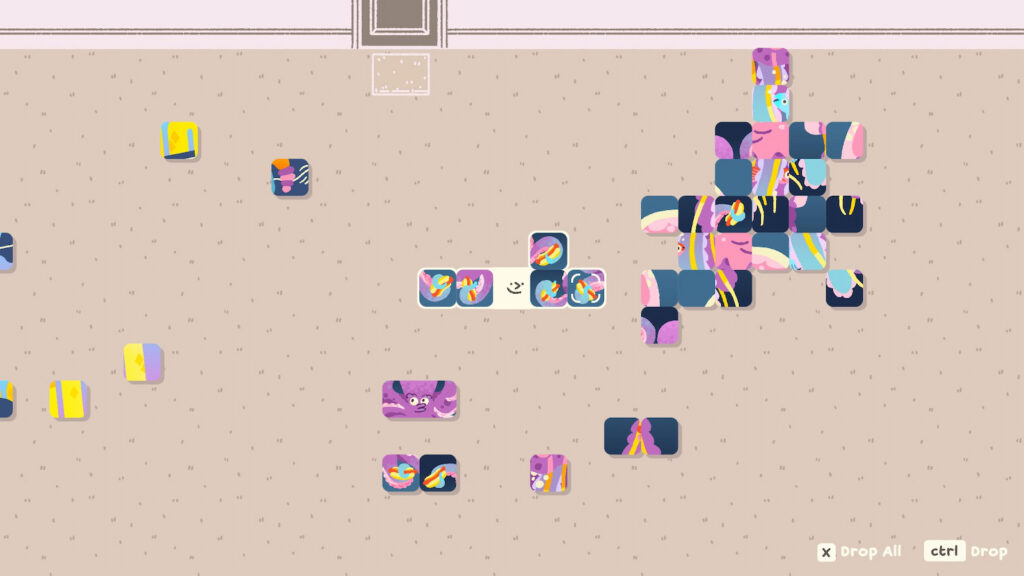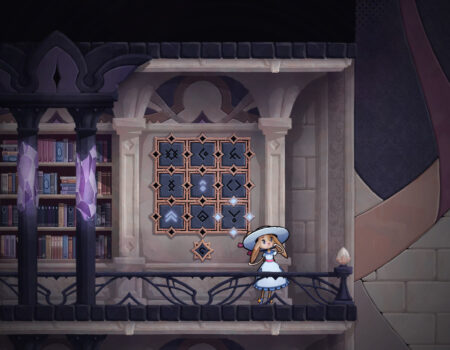| Quick Verdict: Wilmot Works It Out is a fun addition to your gaming library for jigsaw enthusiasts. While I wish the controls were a bit better, I enjoyed getting the chance to work with multiple puzzles at once and found displaying them on our walls to be a charming detail. |
| Game: | Wilmot Works It Out |
| Developer(s): | Hollow Ponds and Richard Hogg |
| Publisher: | Finji |
| Review Score: | 9 |
| Cozy Score: | 9 |
| Price: | $14.99 |
| Pros: | There’s a lot of content, putting the puzzles together isn’t overly taxing, and being able to work on multiple puzzles was a unique spin on the jigsaw puzzle genre. |
| Cons: | The controls are a bit hard to get used to. |
| Platforms: | PC |
| Genres: | Puzzle, Casual |
Wilmot Works It Out is a game designed for puzzle lovers, especially when it comes to jigsaw puzzles. You will be given boxes of random pieces to sort through to make pictures out of.
Personally, I’m a sucker for a jigsaw puzzle both inside and outside of the digital space. I will say, however, that I’m much more picky when it comes to PC games though. The controls are something that have to be just right to enjoy the process, otherwise it feels like you’re fighting frustration one piece at a time.
So, does Wilmot Works It Out actually work out well?

You play as Wilmot, a puzzle enthusiast who has signed up for a puzzle box subscription. You’ll be delivered these sporadically, but most notably after finishing a previous puzzle. They’re delivered to you by a mail person that comes knocking on the door.
As far as I can tell, you can have a bit of interaction with the delivery person, but it mostly seems to just be a little filler to add some warmth to an otherwise sterile concept. And, no, I don’t mean sterile in a bad way. I think we can all agree that jigsaws are a pretty cut-and-dry process.
Each box you get has a random amount of pieces in it that you unload into one big glob. Generally, a full puzzle will be within the box, but you’ll find that you always have extra pieces from a different puzzle.
Once you’ve sorted your pieces, you’ll either be able to finish a puzzle or be one step closer to finishing another. Sometimes, a certain puzzle may take several boxes to complete. There’s always going to be more than one puzzle on your board to juggle.
Once you’ve completed a puzzle or two, you’ll get another knock on the door and more pieces delivered. You can miss deliveries, but you don’t really have to worry about it since you’ll be slipped a note that can be used to reschedule the delivery.
Once you’ve finished a puzzle, you’ll be prompted to put it up on the wall, essentially creating a gallery wall. You can put them anywhere you want, but they won’t be permanent in that area. While all of your puzzle-making happens in the hallway, you’ll find that your progression is measured in rooms.
We’ve all bought puzzle glue to display puzzles, right? …right?

Once your gallery wall is full, you’ll be able to transfer those puzzles to different areas. Your first two options are either the Living Room or the Bedroom. Once you’ve moved the puzzles, you’ll be given a bit of freedom over what accessories go into the room, the type of wallpaper that goes on the walls, and the color scheme of the overall room.
It’s not heavy in the designing phase, but I think it’s a charming little addition that allows you to feel like you’re making something more personal.
I enjoyed playing Wilmot Works It Out, but I don’t think the controller mechanics are set up quite right. You can play with the keyboard or a controller and I found the controller to be a bit easier in my case.
Wilmot moves freely and while you can shove and push blocks around, you need to grab them manually. Happily, you can grab as many blocks as you want, but, unhappily, it’s so easy to get your fingers confused.
You have to click a certain button to select a block, but then you have two different options to either click a separate button to put one down or a third button to put the entire stack down.
Multiple buttons to achieve one thing is my Kryptonite.

Once you have a block selected, you can twirl it around Wilmot to make it easier to slot in wherever you need it. Personally, I wish I could have used my mouse to pull things around, but I can understand why that approach might’ve been ignored.
Jigsaw games have to have a gimmick; something that makes them stand out. Making Wilmot an extension of us rather than a set piece was likely their way of doing that.
Honestly, I’m just glad that all the pieces were always upright and I didn’t have to spin them around to try and configure them in the right orientation. Also, you don’t have to worry about connecting pieces by matching shapes. Wilmot Works It Out is what happens when a jigsaw and a sliding puzzle have a baby.
You work with boxes of color and you’re simply fitting things together that visually make sense.
It seems like Wilmot Works It Out has a ton of puzzles to go through, so you won’t have to worry about finishing in just a few hours.
I still wish I could have used my mouse since the controls were my biggest frustration, but I still had a nice, relaxing time with it.
If you’d like to try out Wilmot Works It Out for yourself, you can get it for $14.99 over on Steam. Otherwise, please feel free to check out our latest review of Fruitbus.








[…] Wilmot Works It Out is a fun addition to your gaming library for jigsaw enthusiasts. While I wish the controls were a bit better, I enjoyed getting the chance to work with multiple puzzles at once and found displaying them on our walls to be a charming detail. […]